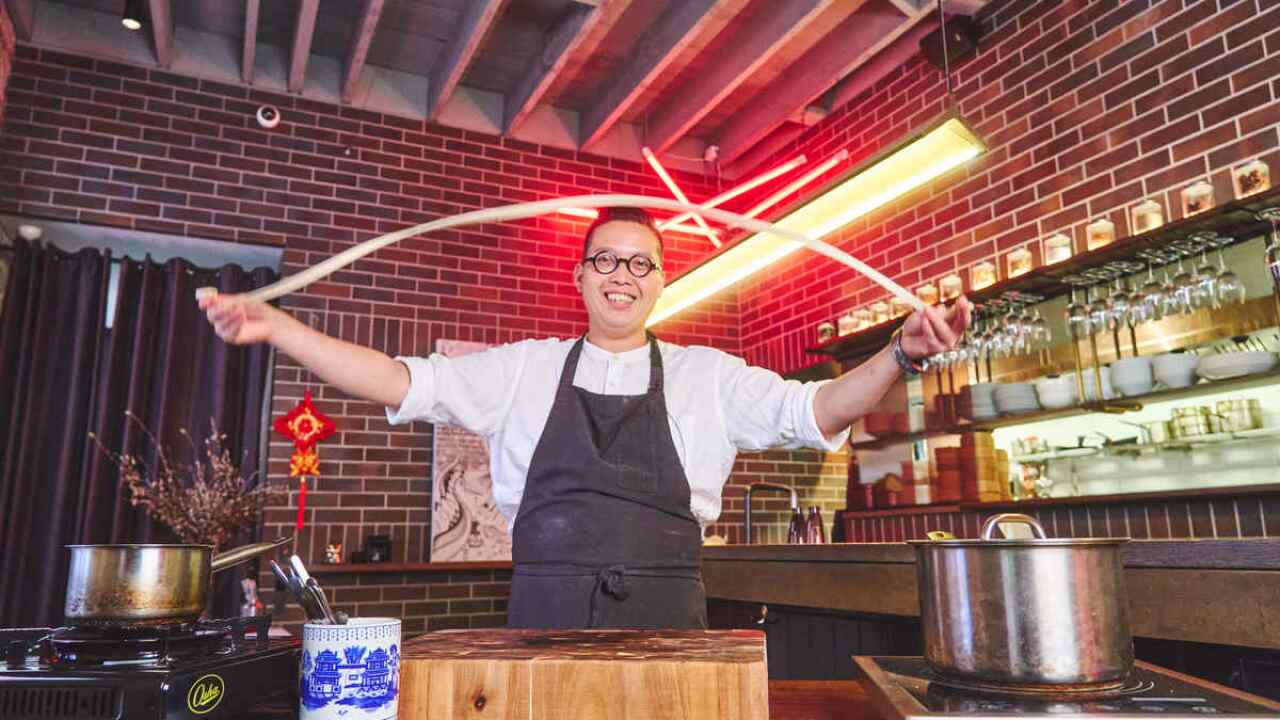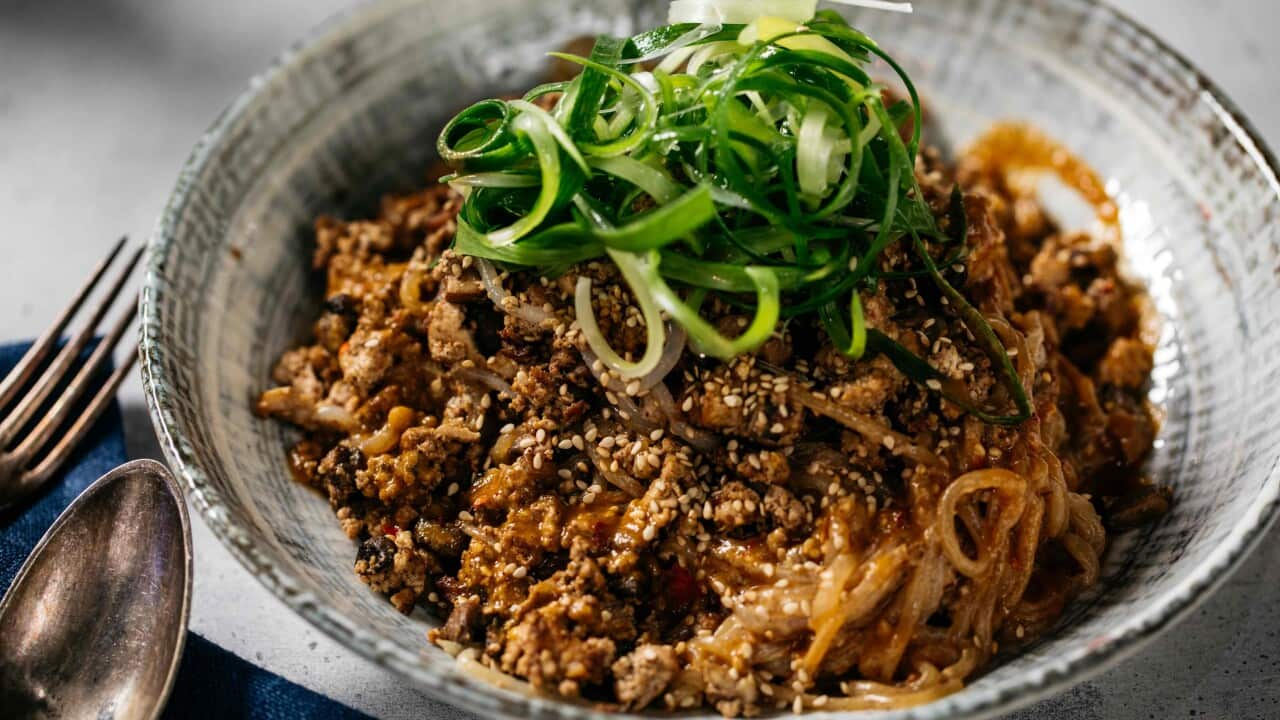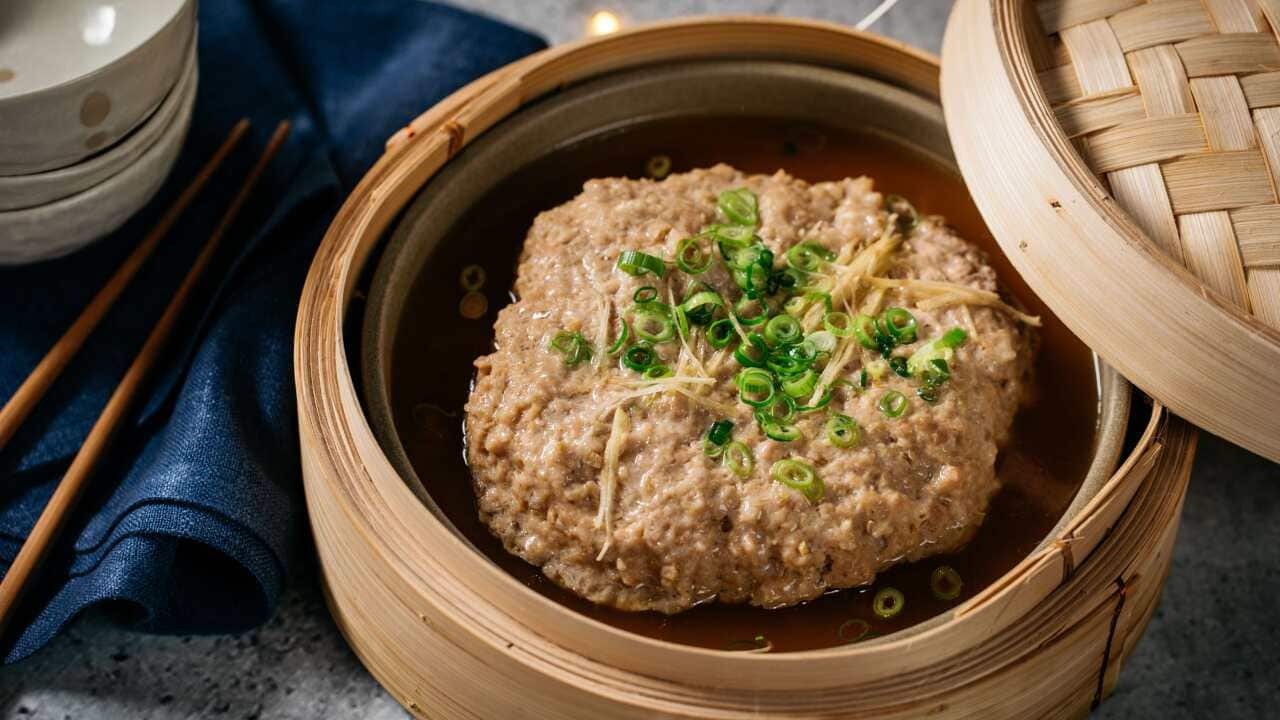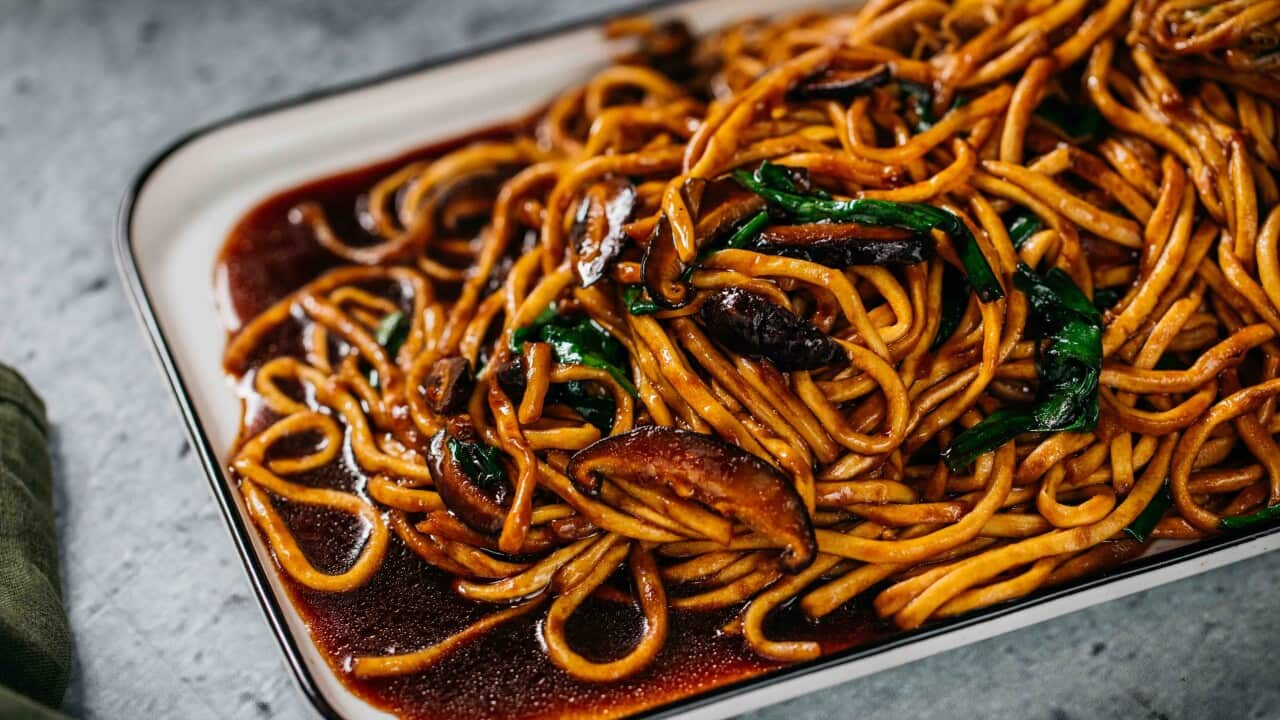--- Watch Victor Liong in the mini-series on SBS Food and streaming free on SBS On Demand ---
Stream free On Demand

Please Eat Slowly
series • cooking
G
series • cooking
G
Growing up in Sydney in the early 90s was marked by my mum's excellent Chinese cooking. She made mainly Cantonese, Hakka and Teochew dishes. She grew up in Malaysia and my grandfather ran restaurants so she had a varied repertoire.
As ingredients from regional China became more available in Australian grocery stores, so too did regional Chinese cuisines in homes and at restaurants alike.

Victor is now the chef and owner of Lee Ho Fook in Melbourne Source: Frank Yang
Soon, I began experiencing more regional cuisines. I had Shanghai drunken chicken, Beijing xiao long baos, Sichuan malatang and Xinjiang cumin lamb skewers. This was an exciting time for a gluttonous young me.
I fell in love with this chewy, garlicky, spicy, slurpy dish as soon as I tasted it.
One dish that stood out was a simple hand-pulled wheat noodle dish called biang biang mian (biang biang noodles). The dish comes from Xi'an of Shaanxi province and it's named after the noodle's belt shape and the slapping sound each noodle makes against the counter when it's being made. Biang biang mian is doused in a black vinegar sauce, hot oil and dry spices. I fell in love with this chewy, garlicky, spicy, slurpy dish as soon as I tasted it.

Biang biang mian (biang biang noodles). Source: Frank Yang
Make it
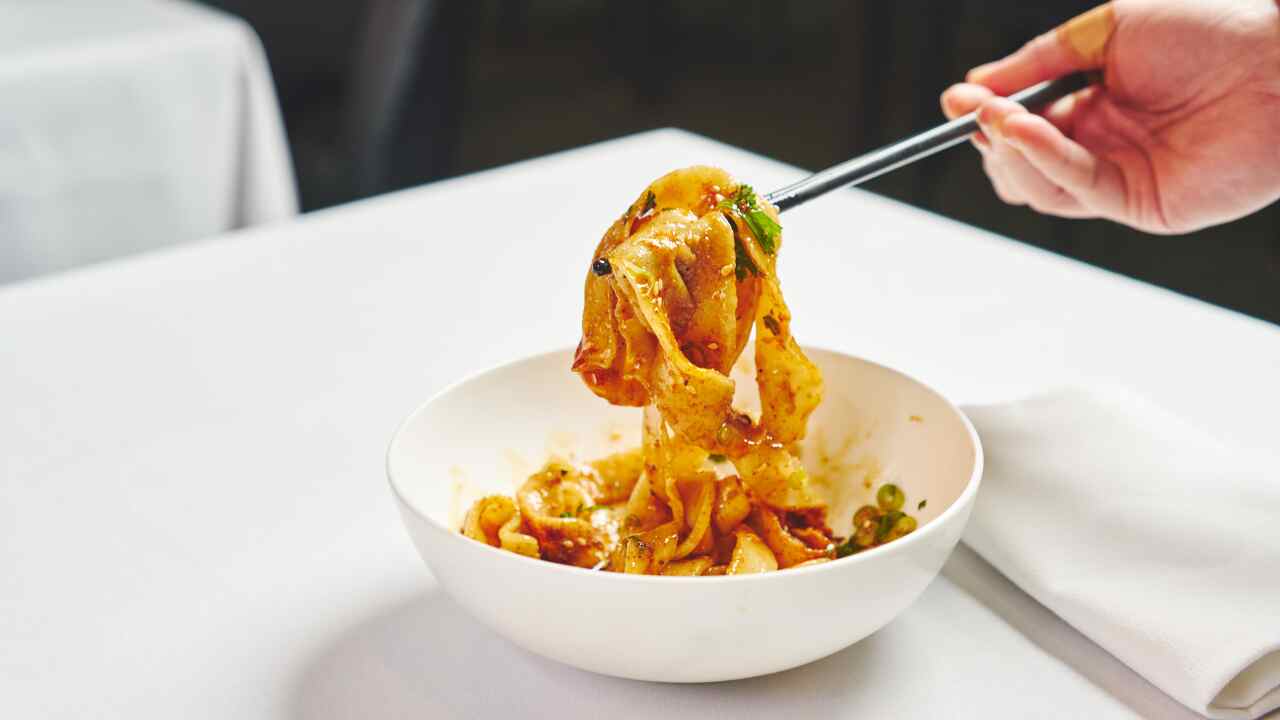
Hand-pulled noodles
Mastering biang biang mian has been fun. The noodles are not practical to make in restaurant kitchens (like most great dishes) but they're good to make for a dinner party, and pulling them puts on a great show. You can even get your guests involved; just make sure to rest the dough beforehand.

Long, chewy and full of flavour Source: Frank Yang

